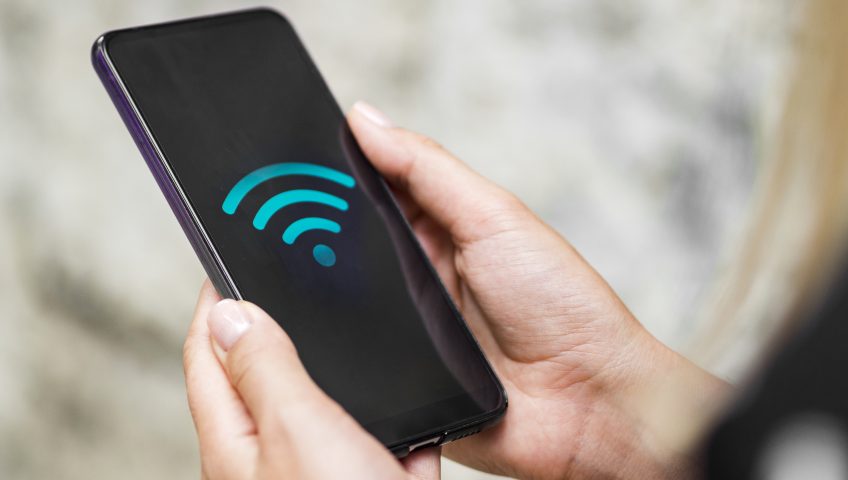Do you remember how we once lived without wi-fi? Nah, we don’t either! We’ve become so used to having instantaneous access to the internet that when we experience wi-fi issues, it can feel like the world is about to end! Avoid catastrophising and read on for common wi-fi issues – and their (generally straightforward) solutions.
The single device won’t connect to the internet
When everyone else is busy working, but you’re languishing in a wi-fi free purgatory, try the following:
- Turn off the wi-fi on your phone/tablet/computer.
- Instruct your device to forget the connection.
- Turn off your device and turn it back on.
- Try to reconnect now. (You may need your password.)
If the old ‘disconnect, turn off, turn on’ routine doesn’t work and you’re running Windows 10 or 11, you can also run through the ‘Identify and repair network issues’ diagnostics. (MacOS users can try ‘Wireless Diagnostics’.)
No devices can connect to wi-fi
If the problem is with multiple devices, the router is likely the culprit. Start by checking the status of the lights on your router: the internet signal light (usually white or green) should be on and solid. The wi-fi light should also be on and is generally blinking. No lights or red lights mean something is amiss. The first (and often best) fix for router issues is to restart/reboot it:
- Switch off your router and unplug the power cable.
- Wait 60 seconds, then plug it back in and switch it back on.
- The router may take several minutes to reboot. (Practice mindful patience!)
- When the router is back up and running, reboot your device and try to connect again.
No internet access (or slow access) in certain rooms
Wi-fi uses radio waves to transmit information between the router and your device. These waves broadcast in all directions from the central device, so the more centralised the router placement in your coverage area, the better your reception will be. Higher is also better: a higher router means a wider broadcast and better overall coverage.
Wi-fi signals can easily pass through wood and drywall, but tiles, metal and concrete can interfere with messages getting through. While they’re running, microwaves, baby monitors, and cordless phones can also run interference.
If your home or office space is too big for one router to handle, or you know there are obstructions, you can extend your signal’s reach with a wireless repeater or mesh system.
Slow internet throughout your home or office
If your wi-fi speed is slow throughout your usage area, try plugging a laptop directly into your modem and test your internet speed using a provider such as speedtest.net.
- If your speed is still slow: you may have a connection problem. Speak to your Internet Service Provider.
- If your direct-connect speed is good: you may be competing with another router for the channel bandwidth. Try switching wi-fi channels.
- If your direct-connect speed is good but switching wi-fi channels has no effect: your router may need an update. Try a factory reset and update the settings.
- And if the factory reset and update had no effect? Your router might be dying, and upgrading may be the best option.
The network connects, but there’s no internet
We’ve said it before (just up above, actually!), and we’ll say it again: try resetting your router (and your modem if it’s a separate device) by unplugging it, waiting 60 seconds, and plugging it back in.
If your device is still in an internet-free zone, connect your laptop to the router directly to check where the problem lies. If there’s still no internet, you may have an outage, and it’s time to contact your ISP.
Still can’t connect? Call the Geelong technology specialists
If the standard fixes above aren’t working and you think there’s something more serious going on, don’t waste your time tearing your hair out – give the experts at Geelong Technology Group a call. (Then take your laptop down to your local café!).
Having a professional IT technician from Geelong Technology Group come into your home or office to assess your wi-fi issues, check for problems and make suggestions for improvements could improve your wi-fi coverage and performance significantly.
Get in contact via phone or email, or drop by our specialised service centre to chat in person:
☎️ 1300 GET GTG (1300 438 484)
📧 support@geelongtechnology.com.au
166 Francis St, Belmont



Recent Comments